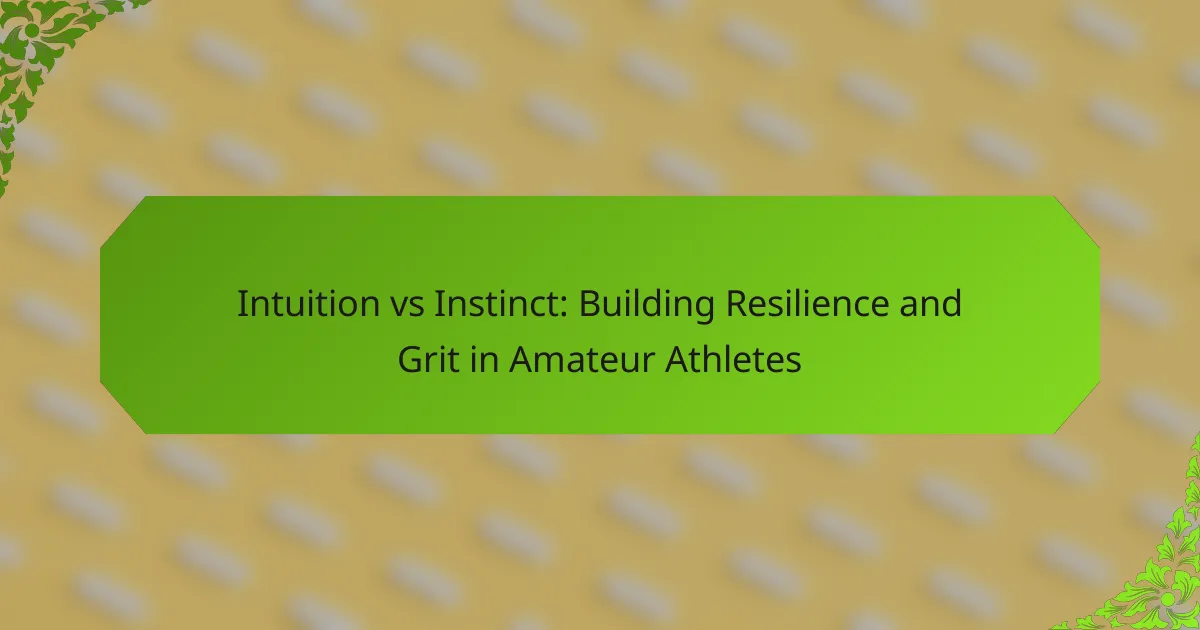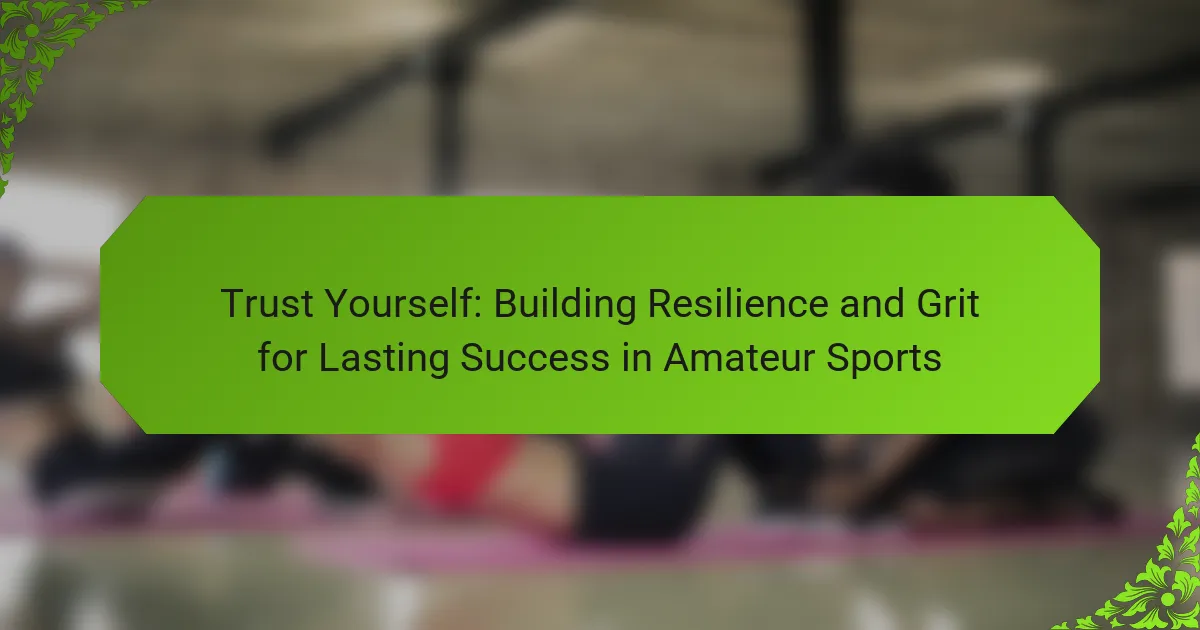Amateur athletes face numerous challenges in their training, and organized chaos offers a solution by fostering resilience and grit. This approach promotes adaptability through varied training environments, enhancing problem-solving skills and mental toughness. Key practices include setting realistic goals, embracing discomfort, and incorporating recovery strategies. Ultimately, structured chaos prepares athletes to thrive under pressure, improving performance and personal growth.
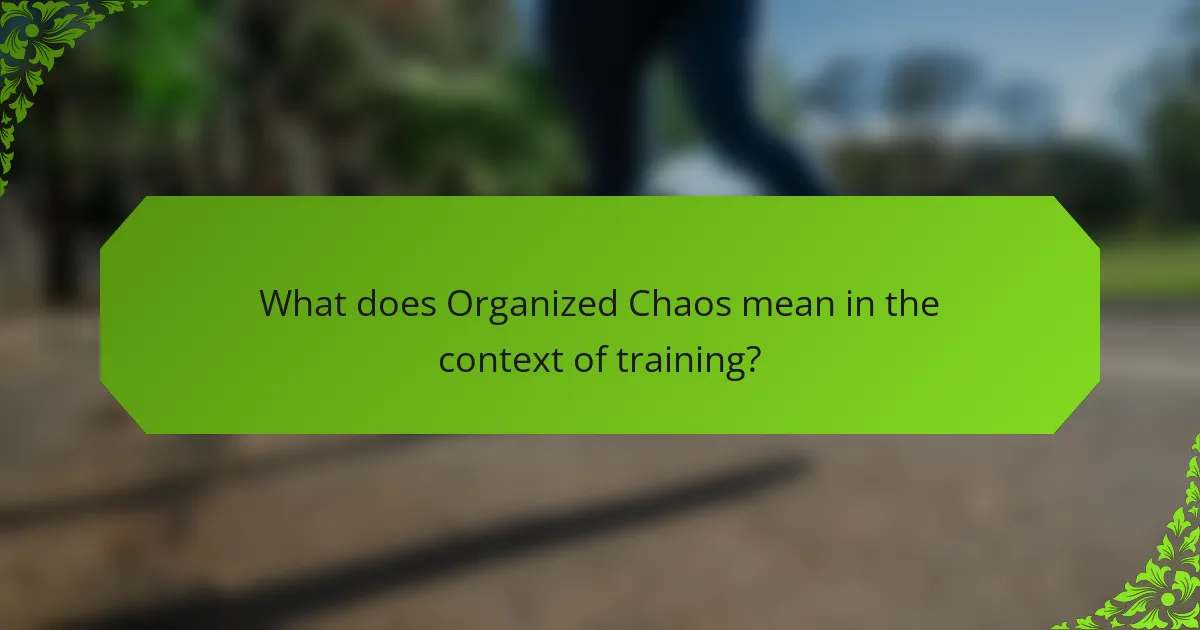
What does Organized Chaos mean in the context of training?
Organized chaos in training refers to a structured yet flexible approach that fosters resilience and grit in amateur athletes. This method allows athletes to adapt to unpredictable situations, enhancing their problem-solving skills and mental toughness. By integrating varied training environments and challenges, athletes develop the ability to thrive under pressure. This approach contrasts with rigid training regimens, promoting creativity and strategic thinking. Ultimately, organized chaos cultivates a robust mindset, essential for overcoming obstacles in competitive sports.
How does it relate to resilience and grit?
Organized chaos fosters resilience and grit by encouraging athletes to adapt to unpredictability. This training method simulates real competition scenarios, enhancing mental toughness. Athletes learn to embrace challenges, developing a mindset that thrives under pressure. As a result, they become better equipped to handle setbacks, reinforcing their determination and perseverance.
Why is it important for amateur athletes?
Amateur athletes benefit from organized chaos as it fosters resilience and grit. This training approach helps them adapt to unpredictable situations, enhancing problem-solving skills. Embracing uncertainty builds mental toughness, crucial for overcoming challenges in sports. Resilience gained through this method translates to improved performance and personal growth.
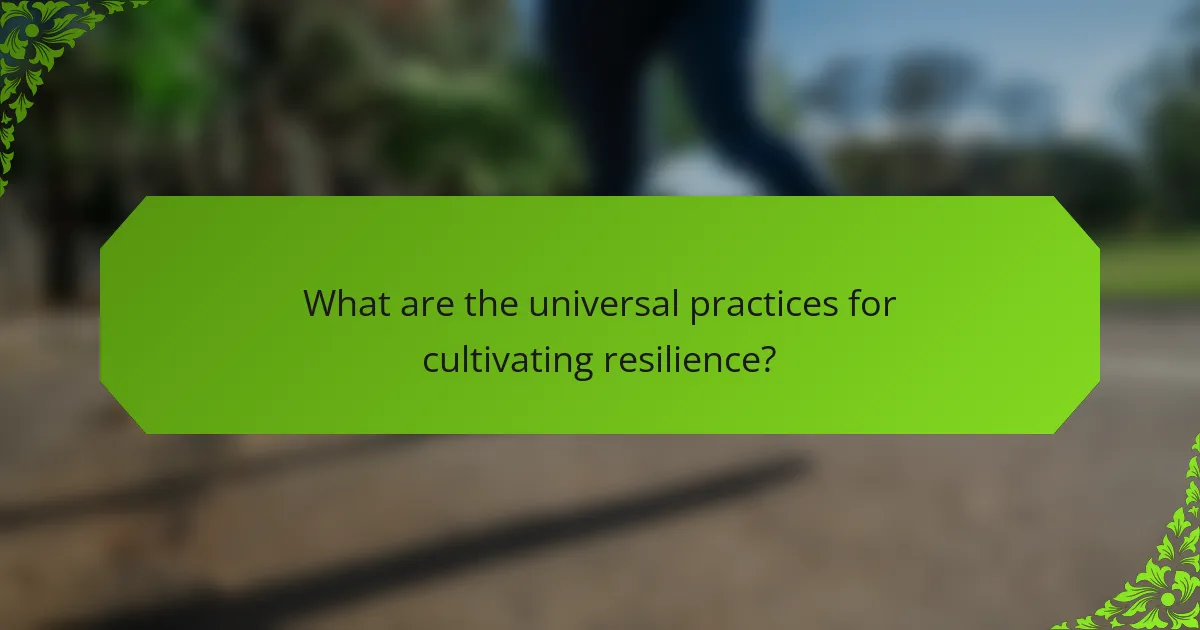
What are the universal practices for cultivating resilience?
To cultivate resilience, amateur athletes should embrace structured chaos in their training. This involves balancing discipline with flexibility, allowing for adaptability in their routines. Key practices include setting realistic goals, fostering a growth mindset, and engaging in diverse training methods. These elements enhance mental toughness and grit, essential for overcoming challenges in sports. Additionally, incorporating recovery strategies and building a supportive community can further strengthen resilience.
How can goal-setting enhance resilience?
Goal-setting enhances resilience by providing structure and direction in training. It allows amateur athletes to focus on specific objectives, fostering grit and determination. Setting measurable goals helps track progress, which can boost motivation and reinforce commitment during challenging times. Additionally, achieving these goals builds confidence, creating a positive feedback loop that strengthens resilience.
What role does consistency play in building grit?
Consistency fosters grit by creating a reliable framework for athletes to develop resilience. Regular training routines build habits, enhancing focus and determination. This repetitive practice helps athletes manage challenges effectively, reinforcing their commitment to long-term goals. As a result, consistent effort transforms setbacks into learning experiences, cultivating a stronger mental fortitude essential for success in sports.
What are effective strategies for maintaining consistency?
To maintain consistency, amateur athletes should establish clear training routines, set measurable goals, and track progress regularly. Consistency fosters resilience and grit, essential attributes for success in training. Developing a structured schedule helps athletes stay committed, while regular assessments allow for adjustments to enhance performance. Encouraging a supportive environment further reinforces dedication and motivation.

What unique attributes define grit in amateur athletes?
Grit in amateur athletes is defined by perseverance, passion, and resilience. These unique attributes enable athletes to overcome challenges and maintain focus on long-term goals. Perseverance involves sustained effort despite obstacles, while passion reflects deep commitment to their sport. Resilience allows athletes to bounce back from setbacks, enhancing their mental toughness. Together, these traits cultivate a strong foundation for success in training and competition.
How does mental toughness manifest in training?
Mental toughness in training manifests through resilience, focus, and adaptability. Athletes develop grit by overcoming challenges and maintaining motivation during setbacks. This psychological strength enhances performance under pressure, fostering a growth mindset essential for improvement. Consistent practice in varied conditions builds mental fortitude, allowing athletes to push their limits and achieve greater success.
What are the emotional aspects of grit?
Grit involves emotional resilience, persistence, and passion, crucial for amateur athletes. Emotional aspects include overcoming setbacks, maintaining motivation, and developing a growth mindset. These attributes foster an enduring commitment to training, enhancing performance. Cultivating grit leads to higher achievement levels and improved mental toughness.
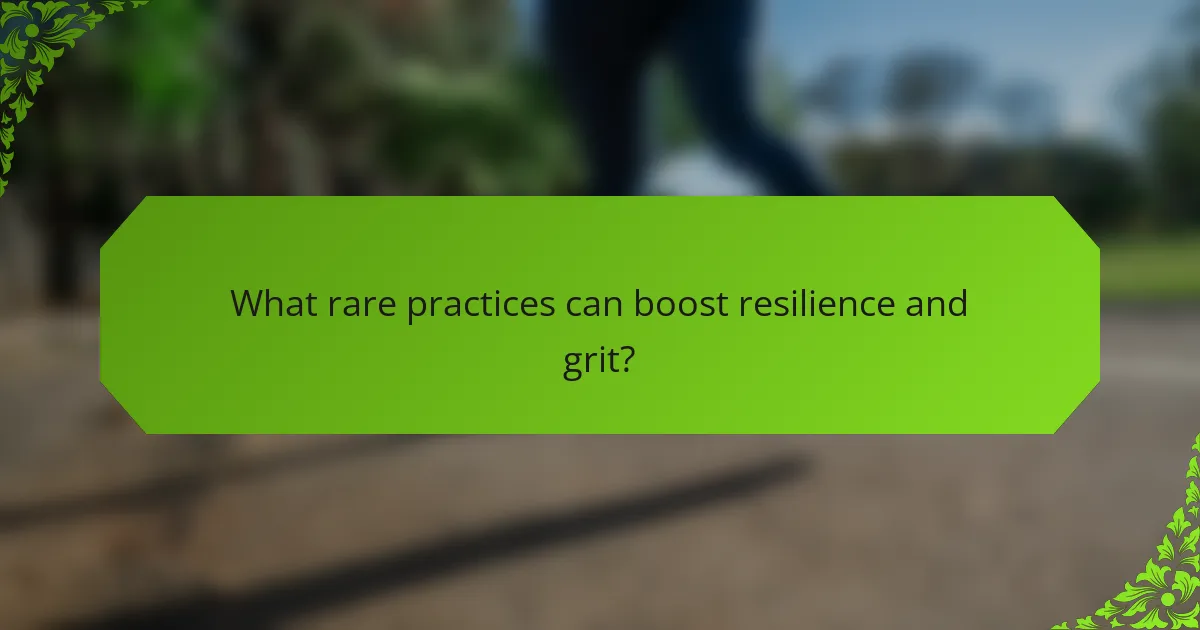
What rare practices can boost resilience and grit?
Incorporating rare practices can significantly enhance resilience and grit in amateur athletes’ training. Techniques like embracing discomfort, practicing mindfulness in chaotic environments, and engaging in unconventional training methods foster adaptability and mental toughness. These practices challenge athletes to push their limits and develop a stronger mindset, ultimately leading to improved performance.
How can unconventional training methods enhance performance?
Unconventional training methods can significantly enhance performance by fostering resilience and grit in amateur athletes. These methods challenge athletes to adapt to unpredictable environments, promoting mental toughness and problem-solving skills. As a result, athletes develop a greater ability to cope with adversity during competitions. Unique attributes of organized chaos training include varied intensity levels and spontaneous challenges, which keep athletes engaged and motivated. This approach not only builds physical strength but also cultivates a mindset geared towards overcoming obstacles.
What is the impact of community support on resilience?
Community support significantly enhances resilience in amateur athletes by providing emotional encouragement, practical resources, and a sense of belonging. This support fosters grit, enabling athletes to navigate challenges effectively. Studies show that athletes with strong community ties exhibit higher perseverance and improved performance metrics. Additionally, social networks can offer valuable feedback and motivation, reinforcing positive training habits. Overall, community support acts as a catalyst for resilience, empowering athletes to overcome obstacles and achieve their goals.
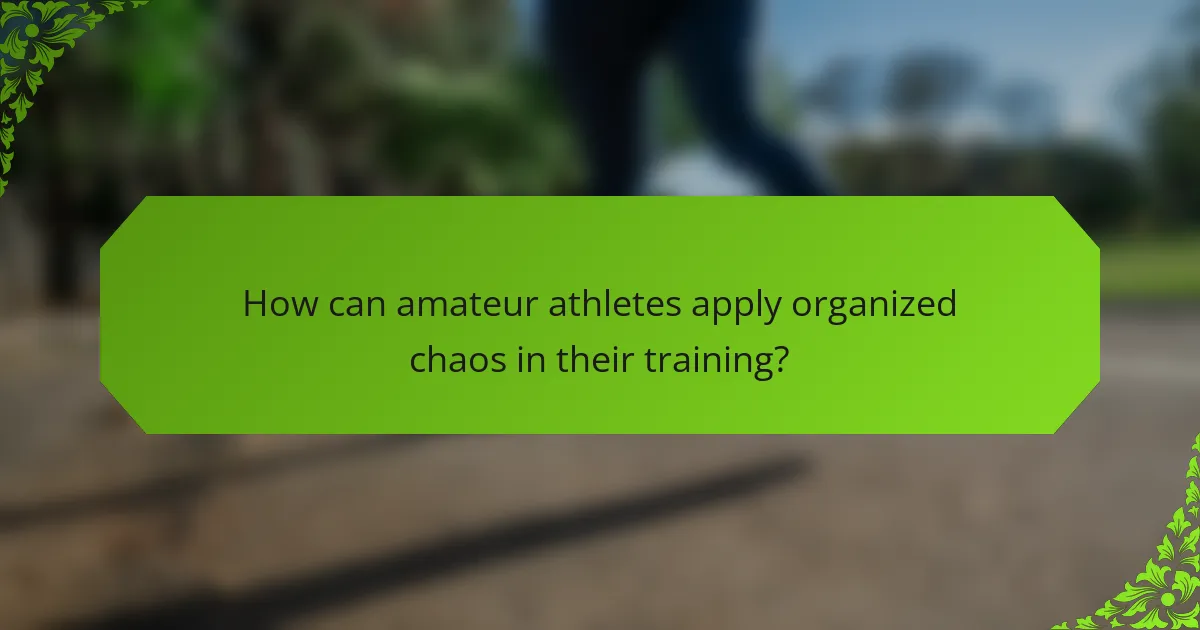
How can amateur athletes apply organized chaos in their training?
Amateur athletes can apply organized chaos in their training by embracing unpredictability to enhance resilience. This approach incorporates varied drills, spontaneous challenges, and adaptive strategies, fostering mental toughness. For instance, mixing training environments or altering routines can simulate competition’s unpredictability. Athletes develop grit by facing diverse scenarios, improving their ability to handle stress and setbacks. Structured chaos not only builds physical skills but also cultivates a mindset prepared for real-world challenges. This method encourages athletes to thrive under pressure, ultimately enhancing performance and personal growth.
What are the best practices for integrating chaos into routines?
Integrating chaos into routines enhances resilience and grit in amateur athletes. Embrace variability in training schedules, incorporate unexpected challenges, and encourage adaptability. This approach fosters mental toughness and prepares athletes for unpredictable situations in competition. Regularly adjusting training intensity and incorporating diverse activities can deepen engagement and promote growth.
What common mistakes should be avoided when implementing these practices?
To avoid common mistakes when implementing organized chaos in training, focus on clear communication and structured flexibility. Misalignment in goals can hinder progress, so ensure all athletes understand the training objectives. Overloading on intensity without adequate recovery can lead to burnout; balance is essential. Failing to personalize training plans for individual needs can diminish resilience; adapt practices based on athlete feedback. Lastly, neglecting to track progress may obscure areas needing improvement; regular assessments are crucial for development.
What expert insights can enhance the understanding of resilience and grit?
Expert insights emphasize that resilience and grit are essential for amateur athletes facing organized chaos in training. Developing a growth mindset enhances their ability to adapt and persevere. Research shows that athletes who embrace challenges demonstrate significantly improved performance and mental toughness. Additionally, fostering a supportive training environment encourages collaboration and shared learning, which can amplify resilience. Techniques such as visualization and goal-setting further empower athletes to navigate setbacks effectively, reinforcing their grit and determination.
What are the key takeaways for amateur athletes?
Amateur athletes should focus on building resilience and grit to navigate training challenges. Key takeaways include embracing discomfort, setting realistic goals, and maintaining a growth mindset. Understanding that setbacks are part of the journey fosters perseverance. Consistent practice and self-reflection enhance adaptability and performance. Finally, creating a supportive community encourages motivation and accountability.

